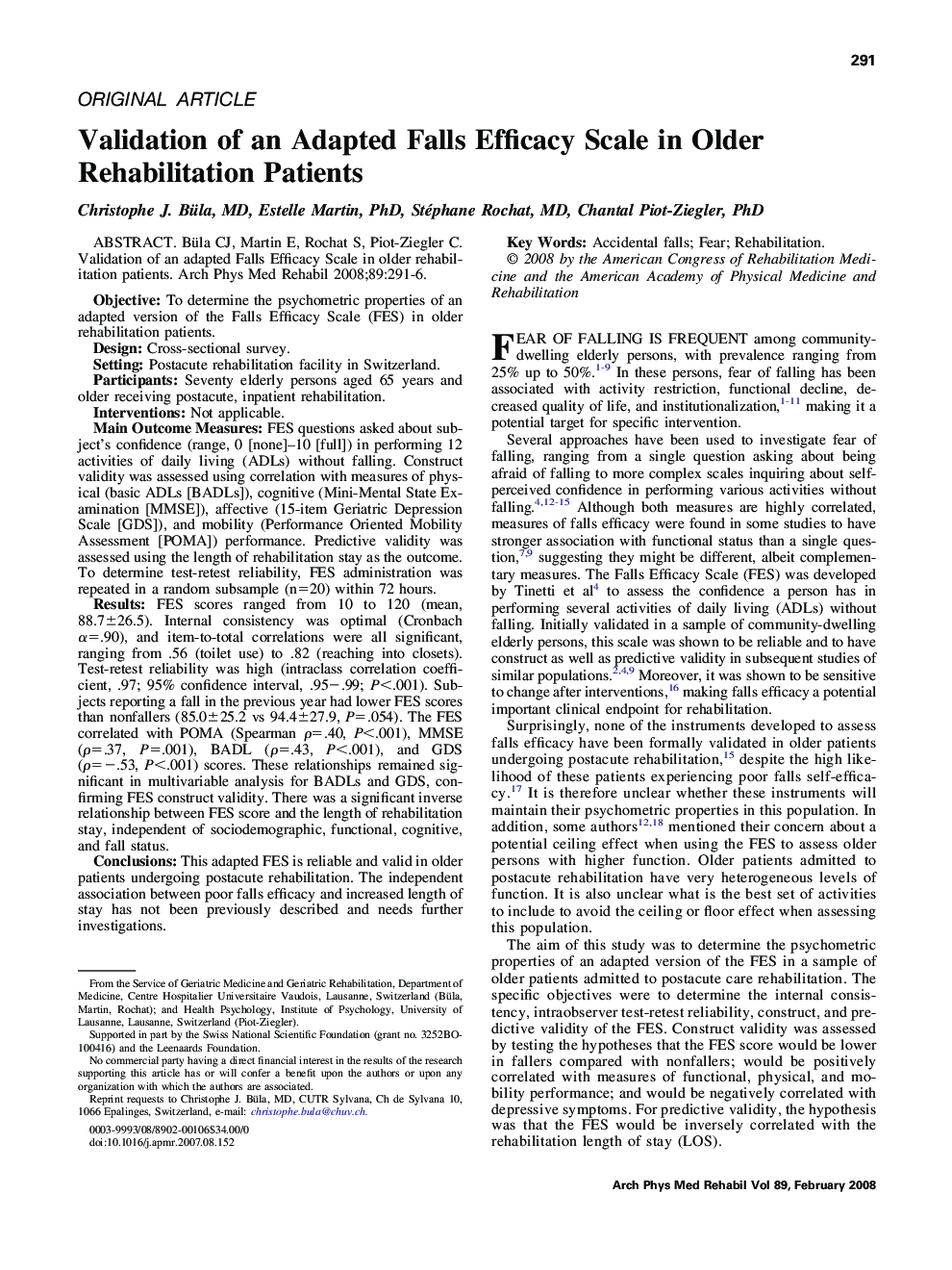| کد مقاله | کد نشریه | سال انتشار | مقاله انگلیسی | نسخه تمام متن |
|---|---|---|---|---|
| 3452041 | 1595783 | 2008 | 6 صفحه PDF | دانلود رایگان |

Büla CJ, Martin E, Rochat S, Piot-Ziegler C. Validation of an adapted Falls Efficacy Scale in older rehabilitation patients.ObjectiveTo determine the psychometric properties of an adapted version of the Falls Efficacy Scale (FES) in older rehabilitation patients.DesignCross-sectional survey.SettingPostacute rehabilitation facility in Switzerland.ParticipantsSeventy elderly persons aged 65 years and older receiving postacute, inpatient rehabilitation.InterventionsNot applicable.Main Outcome MeasuresFES questions asked about subject’s confidence (range, 0 [none]–10 [full]) in performing 12 activities of daily living (ADLs) without falling. Construct validity was assessed using correlation with measures of physical (basic ADLs [BADLs]), cognitive (Mini-Mental State Examination [MMSE]), affective (15-item Geriatric Depression Scale [GDS]), and mobility (Performance Oriented Mobility Assessment [POMA]) performance. Predictive validity was assessed using the length of rehabilitation stay as the outcome. To determine test-retest reliability, FES administration was repeated in a random subsample (n=20) within 72 hours.ResultsFES scores ranged from 10 to 120 (mean, 88.7±26.5). Internal consistency was optimal (Cronbach α=.90), and item-to-total correlations were all significant, ranging from .56 (toilet use) to .82 (reaching into closets). Test-retest reliability was high (intraclass correlation coefficient, .97; 95% confidence interval, .95−.99; P<.001). Subjects reporting a fall in the previous year had lower FES scores than nonfallers (85.0±25.2 vs 94.4±27.9, P=.054). The FES correlated with POMA (Spearman ρ=.40, P<.001), MMSE (ρ=.37, P=.001), BADL (ρ=.43, P<.001), and GDS (ρ=−.53, P<.001) scores. These relationships remained significant in multivariable analysis for BADLs and GDS, confirming FES construct validity. There was a significant inverse relationship between FES score and the length of rehabilitation stay, independent of sociodemographic, functional, cognitive, and fall status.ConclusionsThis adapted FES is reliable and valid in older patients undergoing postacute rehabilitation. The independent association between poor falls efficacy and increased length of stay has not been previously described and needs further investigations.
Journal: Archives of Physical Medicine and Rehabilitation - Volume 89, Issue 2, February 2008, Pages 291–296